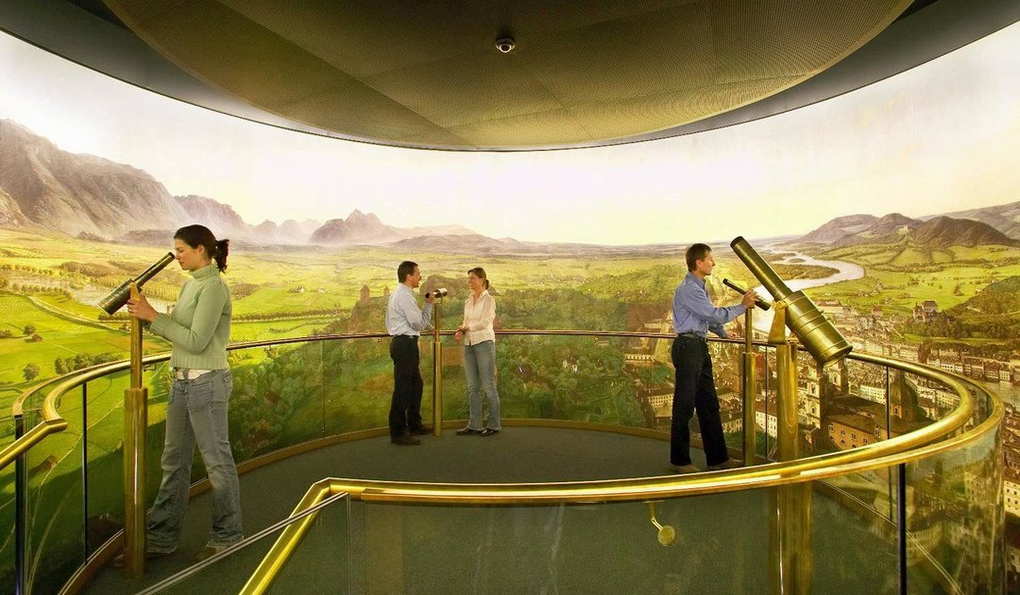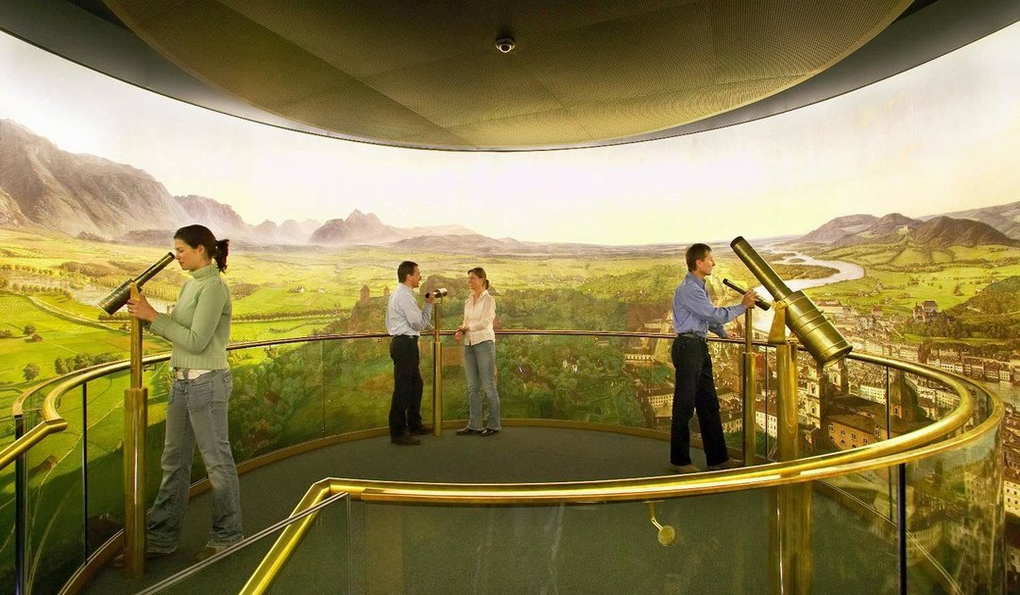Salzburg's Panorama Museum breaks all records for popularity among the city's beauties. The unusual exposition and original presentation of information attract fans of unusual sights as well as children who love anything new and unusual.
Paintings are displayed here in the form of three-dimensional panoramas, showing a series of reconstructions of Salzburg throughout its glorious history.
The amazing thing about being in the museum is that it's like being in a time machine and being transported back to the Holy Roman Empire and then, century by century, experiencing life along with the city's buildings and streets, monuments and churches.

There are many remarkable exhibits in the museum, but the most outstanding is the 1829 panorama of Salzburg and the surrounding countryside, which has its own circular room. The work is on a canvas measuring 125 m2 and the panorama has a circumference of 26 metres.
The monumental construction has a 360 degree viewing angle, allowing every guest to experience a one hundred percent immersive virtual reality experience and, with the help of a special telescope, take a trip back to 19th century Salzburg.
The artist did a particularly good job on the miniatures and managed to capture the details of everyday life at the time. The overall view of the city is exactly as it appeared from the windows of Hohensalzburg Castle.
The panorama itself is a valuable work of art, a masterpiece by the master craftsman Johann Sattler, who spent 4 years of his life creating it. But it was worth it! He travelled all over Europe with his canvas and it was a resounding success in every city.
So 10 happy years passed, and Salzburg also enjoyed great success — after this creative promotion he became famous in Munich and Vienna, Prague and Hamburg, Berlin, Copenhagen and Amsterdam, but also in Brussels and Paris. Visitors from all the world's capitals flocked to the city, helping to boost tourism and the economy of Salzburg.

The Panorama Museum in Salzburg is also popular with tourists because, curiously, photography and filming are allowed. It is worth noting that a similar panorama, but with views of modern Salzburg, is displayed outside the museum for visual comparison.
The museum has two floors where you can also see other works by the master — cosmoramas depicting the monuments and landscapes of other cities. The overall impression of the museum is one of lightness and cheerfulness.
Many travellers point out that looking at the interactive panels immediately improves their mood. This is understandable, because we are immersed in a world where, at least in the pictures, peace and serenity reign, where trade is conducted, people communicate and art is created.
The panoramic effect allows us not only to observe the world from a distance, but also to become part of it for a while.
The Panorama Museum is connected to the Salzburg Museum by underground passages and is also an official partner of the Salzburg Museum. Tourists can even buy a single ticket that includes admission to both museums.
These two museums are also connected by a passageway, where artefacts from prehistoric times and the Holy Roman Empire, pottery, ovens and other ceramic objects, as well as original mosaic fragments from the city wall of the Yuwavum settlement, are on display.
The Panorama Museum offers themed tours at a reduced price every Thursday. There is also a discount for families visiting the museum with their children.











